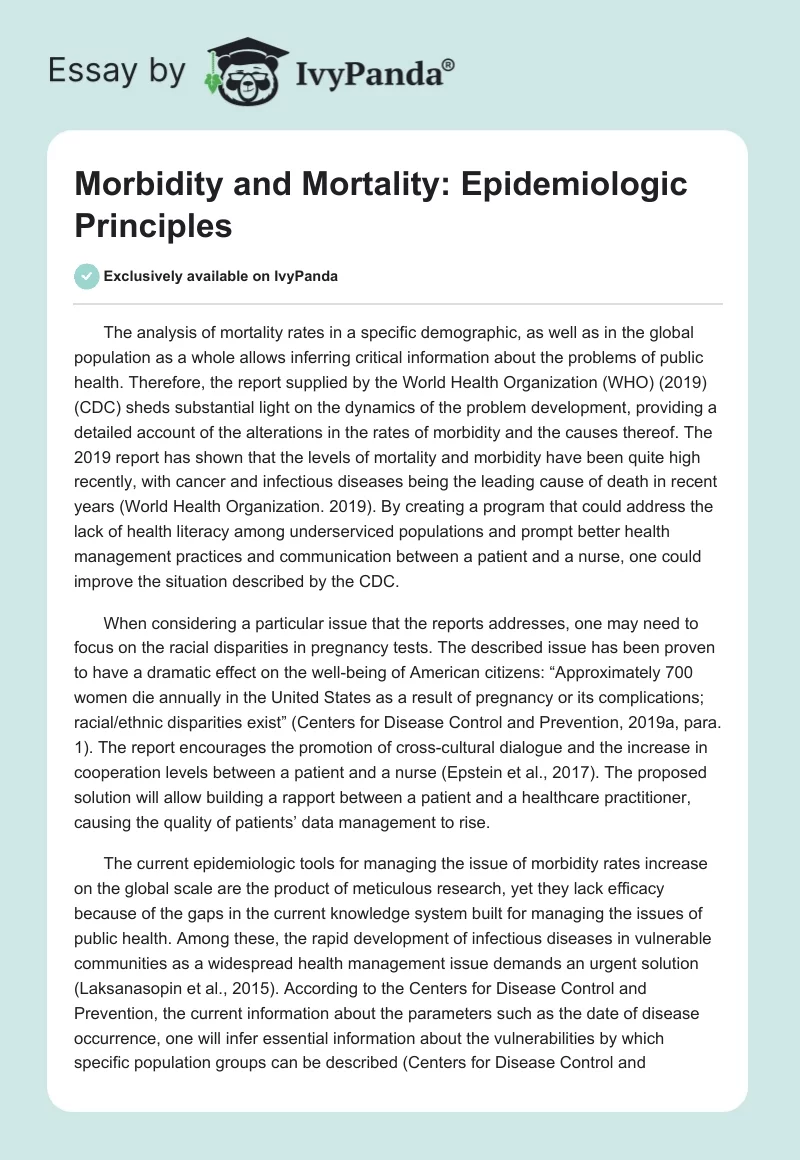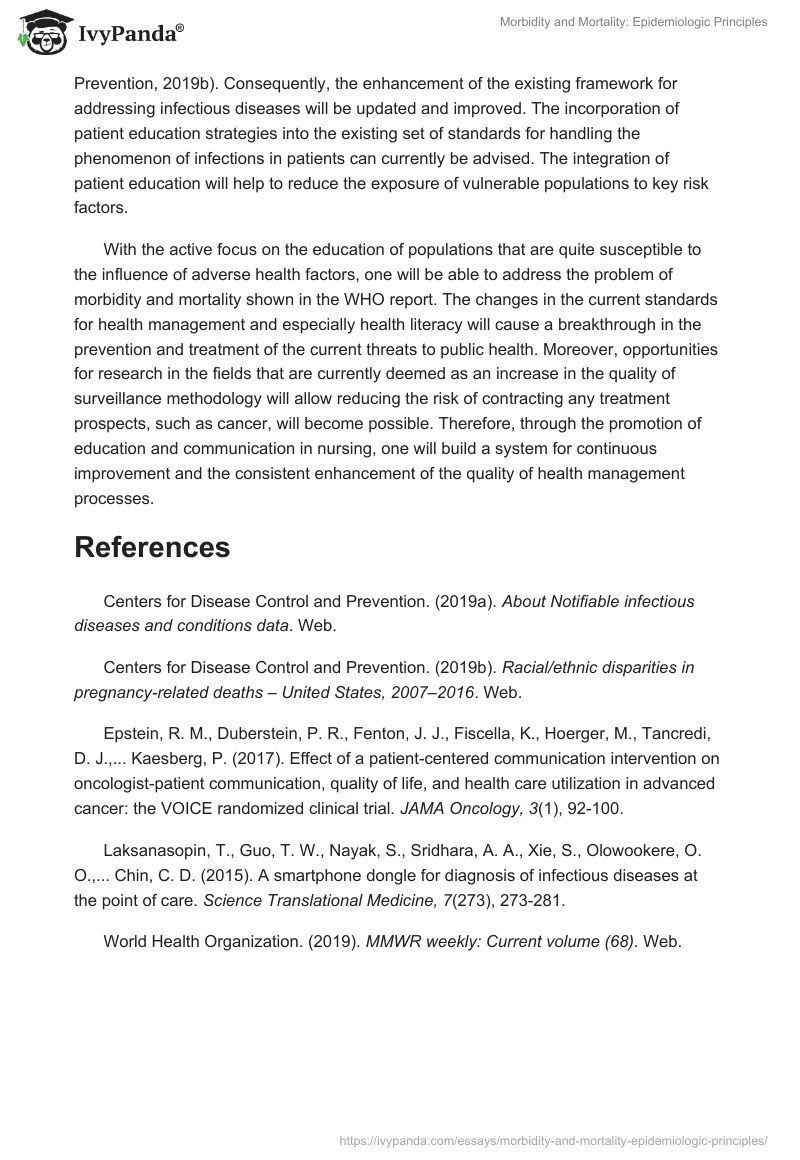The analysis of mortality rates in a specific demographic, as well as in the global population as a whole allows inferring critical information about the problems of public health. Therefore, the report supplied by the World Health Organization (WHO) (2019) (CDC) sheds substantial light on the dynamics of the problem development, providing a detailed account of the alterations in the rates of morbidity and the causes thereof. The 2019 report has shown that the levels of mortality and morbidity have been quite high recently, with cancer and infectious diseases being the leading cause of death in recent years (World Health Organization. 2019). By creating a program that could address the lack of health literacy among underserviced populations and prompt better health management practices and communication between a patient and a nurse, one could improve the situation described by the CDC.
When considering a particular issue that the reports addresses, one may need to focus on the racial disparities in pregnancy tests. The described issue has been proven to have a dramatic effect on the well-being of American citizens: “Approximately 700 women die annually in the United States as a result of pregnancy or its complications; racial/ethnic disparities exist” (Centers for Disease Control and Prevention, 2019a, para. 1). The report encourages the promotion of cross-cultural dialogue and the increase in cooperation levels between a patient and a nurse (Epstein et al., 2017). The proposed solution will allow building a rapport between a patient and a healthcare practitioner, causing the quality of patients’ data management to rise.
The current epidemiologic tools for managing the issue of morbidity rates increase on the global scale are the product of meticulous research, yet they lack efficacy because of the gaps in the current knowledge system built for managing the issues of public health. Among these, the rapid development of infectious diseases in vulnerable communities as a widespread health management issue demands an urgent solution (Laksanasopin et al., 2015). According to the Centers for Disease Control and Prevention, the current information about the parameters such as the date of disease occurrence, one will infer essential information about the vulnerabilities by which specific population groups can be described (Centers for Disease Control and Prevention, 2019b). Consequently, the enhancement of the existing framework for addressing infectious diseases will be updated and improved. The incorporation of patient education strategies into the existing set of standards for handling the phenomenon of infections in patients can currently be advised. The integration of patient education will help to reduce the exposure of vulnerable populations to key risk factors.
With the active focus on the education of populations that are quite susceptible to the influence of adverse health factors, one will be able to address the problem of morbidity and mortality shown in the WHO report. The changes in the current standards for health management and especially health literacy will cause a breakthrough in the prevention and treatment of the current threats to public health. Moreover, opportunities for research in the fields that are currently deemed as an increase in the quality of surveillance methodology will allow reducing the risk of contracting any treatment prospects, such as cancer, will become possible. Therefore, through the promotion of education and communication in nursing, one will build a system for continuous improvement and the consistent enhancement of the quality of health management processes.
References
Centers for Disease Control and Prevention. (2019a). About Notifiable infectious diseases and conditions data. Web.
Centers for Disease Control and Prevention. (2019b). Racial/ethnic disparities in pregnancy-related deaths – United States, 2007–2016. Web.
Epstein, R. M., Duberstein, P. R., Fenton, J. J., Fiscella, K., Hoerger, M., Tancredi, D. J.,… Kaesberg, P. (2017). Effect of a patient-centered communication intervention on oncologist-patient communication, quality of life, and health care utilization in advanced cancer: the VOICE randomized clinical trial. JAMA Oncology, 3(1), 92-100.
Laksanasopin, T., Guo, T. W., Nayak, S., Sridhara, A. A., Xie, S., Olowookere, O. O.,… Chin, C. D. (2015). A smartphone dongle for diagnosis of infectious diseases at the point of care. Science Translational Medicine, 7(273), 273-281.
World Health Organization. (2019). MMWR weekly: Current volume (68). Web.


